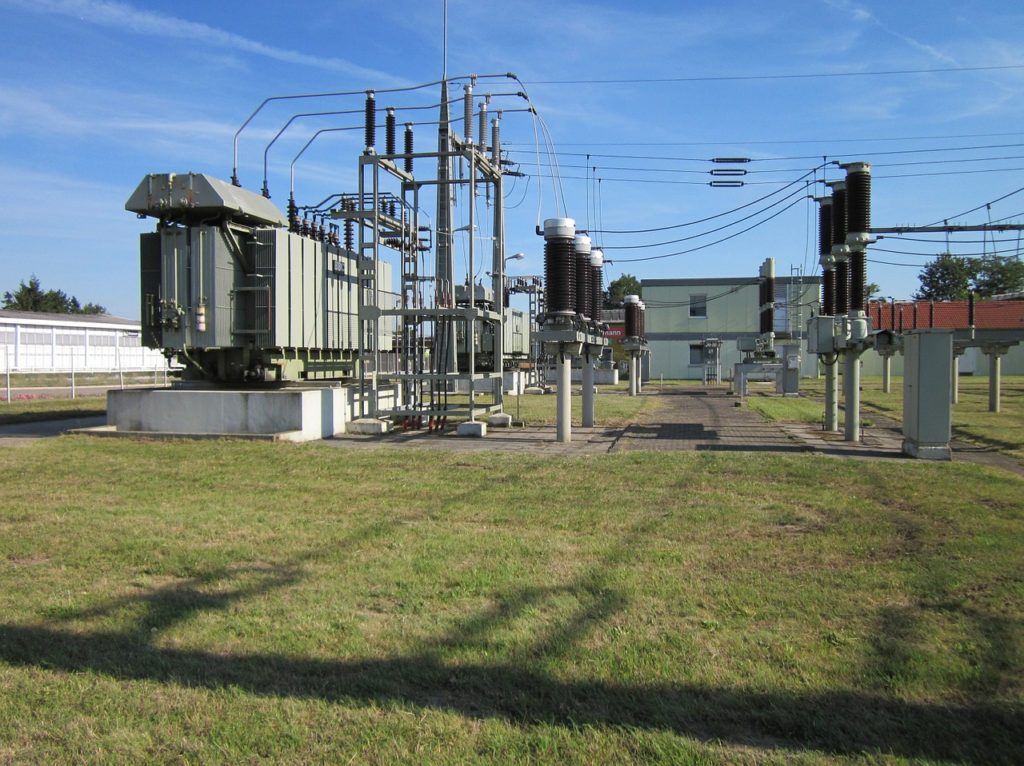Transformer reactive power consumption
Power transformers ‘consume’ inductive VARS during operation. This is due to the reactive power requirement of two separate branches of the transformer namely:
- Shunt Magnetizing Reactance
- Series Leakage Reactance
The reactive power drawn by power transformer could be as high as 5% of the transformer rating when supplying full load current. Power factor at the primary of the transformer is usually lower than what is measured at the secondary due to this reactive power requirement of transformer. If the metering is done at medium voltage then the additional reactive power consumed by the transformer will also be measured. In cases like these it is important to know how much reactive power is drawn by the transformer so that it can be subtracted from the load reactive power demand. This is usually the case when the electric utility meter is at the primary and the transformer is owned by the electric utility as well. It makes no sense to bill for the reactive power consumed by the utility owned transformer since they could have very well put the metering on the LV side and customer will not have to pay for it if that’s the case. When the customer owns the transformer then the reactive power drawn by the power transformer will be metered by the utility.

The calculator below can be used to calculate reactive power consumption in transformer at full load and rated voltage. To calculate the reactive power due to just the shunt magnetizing impedance, use %load as ‘no load’.
The capacitor banks will be usually smaller than the value calculated since there is a risk of overcompensation during light load condition. An automatic step power factor capacitor may be installed that would only switch the necessary capacitor steps to bring the power factor to the desired level. However, for this the power factor measurement will have to be done at the primary of the transformer which may not be feasible all the time. Most often the reactive power consumed by power transformer is only a small percentage of the facility reactive power demand and accurate compensation may not be required.
1. Shunt Magnetizing Reactance
Shunt magnetizing reactance is responsible for creating the magnetic flux in the transformer core. The current required to create this flux in the core is called exciting current and is relatively independent of the transformer load current. Exciting current is usually around 0.25-2% of the transformer full load current. The actual exciting current value can be obtained from the factory test report or can be measured in the field.
To calculate the reactive power draw, first calculate the approximate shunt magnetizing impedance from the given excitation current. Excitation current is usually provided as a percentage of the transformer full load current.

2. Series Leakage Reactance
Series leakage impedance indirectly refers to the amount of magnetic flux that do not link between the primary and secondary winding. The series leakage reactance (also known as %impedance) is an important transformer parameter that determines the short circuit contribution, voltage regulation etc.
The reactive power demand due to the series leakage reactance varies as the square of the load current. The total inductive power demand of the power transformer is the arithmetic sum of the demand due to both the branches above. The calculator in this article calculates this for you.
The total inductive power demand of the power transformer is the arithmetic sum of the demand due to both the branches above. The calculator in this article calculates this for you.
Compensation of reactive energy absorbed by transformer
The reactive power consumption of transformer can be compensated by addition of shunt connected capacitor banks. As can be observed from the calculator, when transformer is loaded, total reactive power Qt is composed of two components: reactive power Q0 during secondary open-circuit operation (no load condition) and reactive power caused by leakage reactance. Total reactive power consumed by transformer is described by following equation:

Where,
Qt= Total reactive power consumed by transformer
Q0= Reactive power consumed by shunt magnetizing reactance of transformer (no load condition)
%z= Transformer percentage short circuit impedance
kvaT= Transformer rated kVA
kvaL= Load kVA
When capacitive compensation is desired to compensate the reactive power draw of transformer, care should be taken to avoid overcompensation during light load condition. During light load condition or no load condition, there will not be any reactive power consumed by the series leakage reactance and only shunt magnetizing impedance will draw reactive power. If overcompensated it would cause voltage increase at secondary terminals. Many utilities provide document that lists the maximum capacitive compensation that can be installed at the secondary of a service transformer. Contact your local electric utility if this information is desired.
More often the reactive power consumption of transformer itself is very small compared to the total reactive power demand of the facility load. In these cases, the facility may decide to install a larger capacitor bank at the transformer secondary. In this case it is necessary to pay attention to the possibility of harmonic resonance between the transformer reactance and the capacitor.
